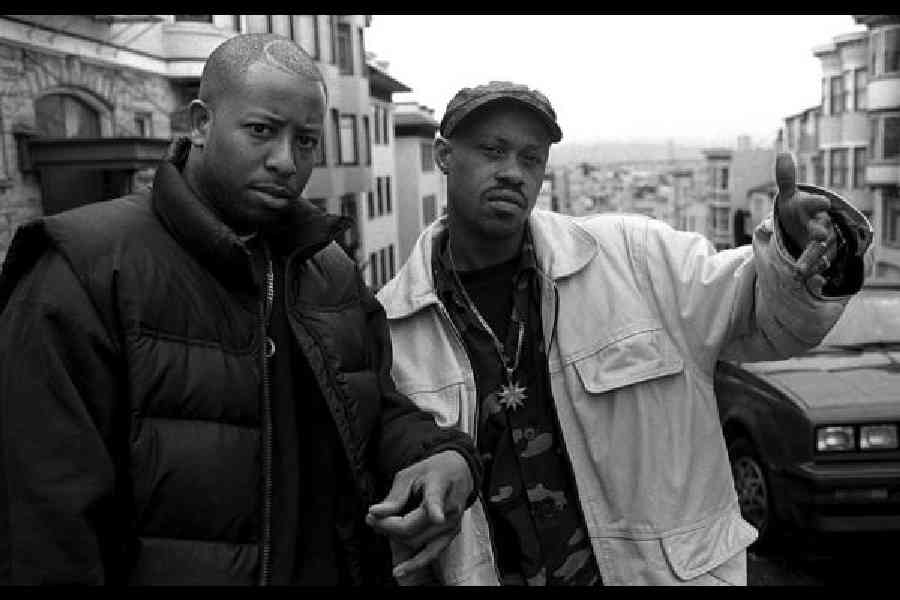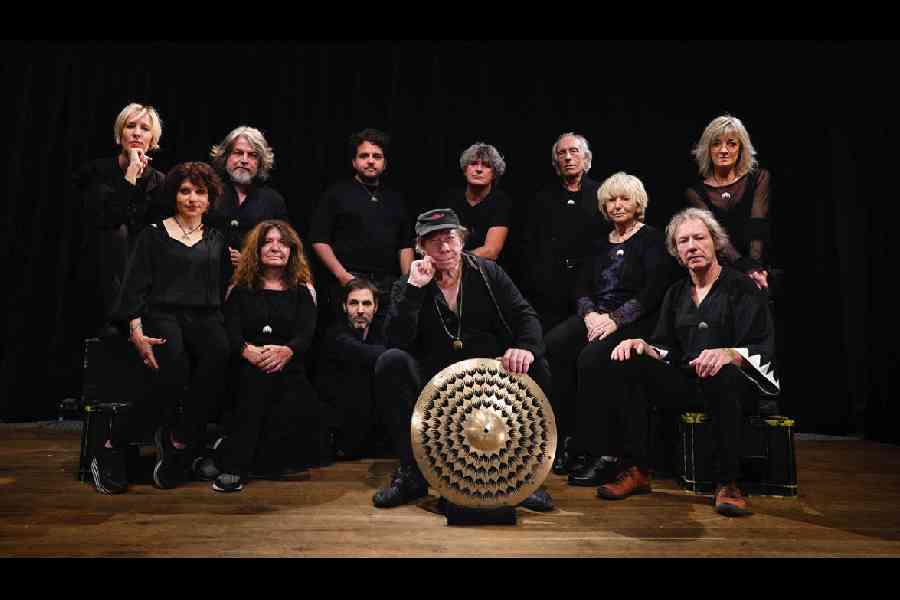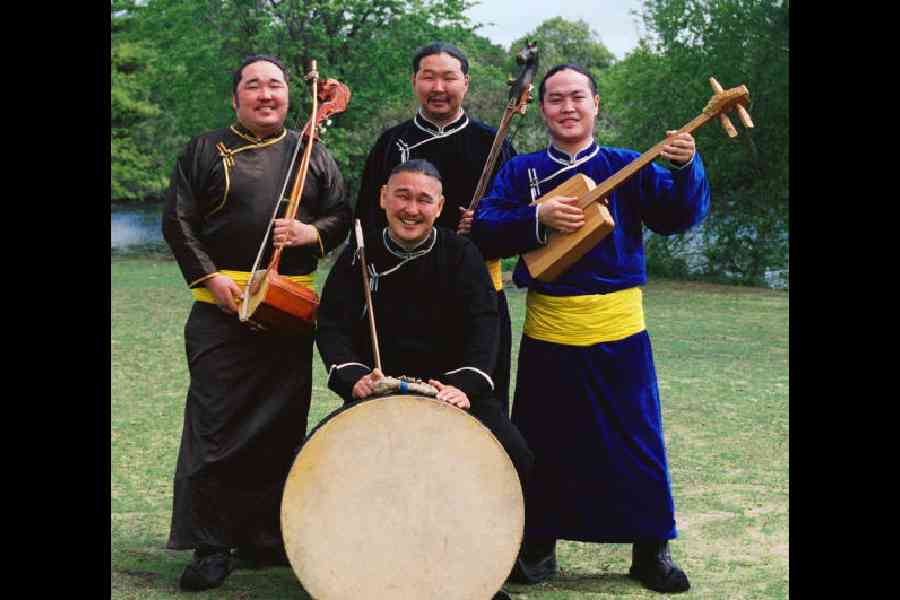Music unites us all but genres unite us selectively. However, there are some genres so distant from our spectrum of sonic familiarity that they seldom initiate any act of uniting or dividing music listeners. The following list attempts to encompass some unconventional, obscure and even overlooked genres that have left a mark in the history of music.
Traditional throat singing
One of the oldest forms of music in existence, throat singing is a guttural style of singing still prevalent in many indigenous and ethnic communities. With controlled movement of the lips, jaws, tongue and larynx, a variety of harmonies are produced by throat singers, and different forms of throat singing have existed across the world. In Tuva, bordering northwest of Mongolia, throat singing exists as Khoomei, which, through its sustained low notes, establishes connections with the Tuvan natural landscape. A form of throat singing called Katajjaq is practiced amongst the Inuits of northern Canada, which includes sharp and short inhaled and exhaled delivery of breath. In South Africa, it has existed as Umngqokolo amongst the Xhosa of Bantu origin, taking the form of droning, sustained notes sung in two different tones simultaneously by a single person.

American hip-hop duo Gang Starr
Noh theatre music
The performance of a Noh drama has music as a significant accompaniment, which is produced by flute, three kinds of drums and vocals. Although deeply rooted in Japanese tradition since its emergence around the 14th century, the music of Noh may present a challenge to those unfamiliar with the tradition and its underlying contexts. However, the unconventional approach that the music of Noh seemingly emits is actually firmly structured and strictly abides to various rules laid out for its performance. The instrumentation of Noh theatre music has been utilised in many Japanese films, like those of Akira Kurosawa’s, anime, and even in video game titles like Sekiro.
Zeuhl
Zeuhl is a widely overlooked and lesser-known subgenre of progressive rock, which incorporates operatic vocals, throbbing basslines, guitar solos, ethereal synthesizers and sluggish, martial or repetitive percussion to erect a hypnotic and transcendental sound. The birth of this genre is credited to the French band Magma, formed in 1969, and their fictional language, Kobaian, in which most of their lyrics are sung. Soon, a lot of bands, even outside of France, followed in this direction, and spawned a horde of celestial-sounding albums, cementing this genre and further defining this stellar, dreamy style. Some notable bands and artistes are Magma, Archaia, Eskaton, Koenji Hyakkei.
Neofolk
The origin of neofolk is accredited to punk circles based in England during the 1980s, where artistes like Death In June, Sol Invictus and Current 93 cemented this genre by espousing a dark ambient sound shaped by the fusion of acoustic guitars with industrial instruments, which had an immersive and minimalistic quality. The thematic and lyrical leanings of these artistes inclined towards traditional European ethnicity and occasionally towards Nordic cultures of the past, and were often outspoken in their revolt against the modern, rational world. However, in contemporary times, the term has also been used for groups practicing traditional or ethnic musical forms, like Heilung and Wardruna of the Nordic folk genre.

French band Magma
Jazz rap
In 1989, the American hip-hop duo Gang Starr sampled Dizzy Gillespie and Charlie Parker’s Nights In Tunisia in their own rap song titled Words I Manifest. Soon, a number of rap groups followed in this new direction, which took a detour from gangster rap of the 1980s to incorporate more technical instrumentation influenced from jazz and bebop styles. Words were rhymed atop such complex rhythmic structures informed by interesting and versatile shifts and transitions. Apart from sampling jazz classics, many jazz groups also composed their own instrumental sections, influenced from jazz’s adventurous exploration of sounds. Some noteworthy artistes and groups are Gang Starr, A Tribe Called Quest, Digable Planets, The Roots.
Darkwave
It was by borrowing the synthpop sound of new wave, the agitation of post-punk and the bleakness of goth rock that the genre of darkwave came into emergence in the 1980s in Europe. Practitioners of this genre have often espoused short and simple song structures composed of catchy guitar and bass hooks blended with synthesizers and minimalistic percussion, which are arranged in dance and disco rhythmic patterns in slow or moderate tempos. With its romantic bent, the lyrics of darkwave songs usually encompass themes of isolation, heartbreak, vampirism, death, occultism and so on. The genre of darkwave has also helped popularise the trad goth fashion and aesthetic of flamboyant hairdos and black attires, complete with dark-coloured eyeliners, lipsticks and nail polishes. Some notable artists and groups are Siouxsie And The Banshees, Twin Tribes, She Past Away and Boy Harsher.
Gypsy punk
Beginning with the fusion of Romani and Eastern European traditional music with punk rock structures, instrumentation and delivery, this genre began as an innovative approach to punk, and is often traced to the American band, Motherhead Bug, active during the 1990s. Songs by gypsy punk practitioners often involve multilingual lyrics with shouted or distorted vocal delivery over instruments like tambourine, accordion, fiddle and drums. Some practitioners of this style are Motherhead Bug, Gogol Bordello, Blackbird Raum and Kultur Shock.
Lowercase
Having been popularised with the release of Steve Roden’s 2001 album, Forms Of Paper, which was composed of recorded and amplified sounds of rubbing and scraping of paper, this ambient, experimental and minimalist genre tends to amplify sounds that often get drowned or neglected in the sonic clutter of our everyday lives. Sounds emitted by different mundane objects, or that of the quiet rustling of leaves, of blowing wind, of people coughing, of machinery, and so on are the varied range of sounds that one may encounter in a lowercase album, unlike an organised arrangement of melodies, hooks, vocals and instruments characteristic of most musical genres. Some lowercase artistes to look out for are Steve Roden, Tetsu Inoue, Richard Chartier, Miki Yui.
Bardcore
With its intended pun on hardcore, the genre of bardcore rewinds history through reimaginings of modern popular music in a style befitting that of a medieval bard’s. Its emergence is usually traced to a 2017 cover of System of a Down’s song, Toxicity, performed with medieval instruments by a YouTuber named Algal the Bard. However, the term was popularised during the Covid pandemic, when another YouTuber named Cornelius Link began to upload medieval-styled covers of pop and rock songs, and was soon joined in his endeavours by yet another YouTuber called Hildegard Von Blingin’, who added vocals over them. Since then, several more artistes have followed suit. From covers of Rolling Stones and AC/DC to Wu-Tang Clan and Linkin Park, bardcore has them all covered.
Noise music
In 1913, Italian composer Luigi Russelo’s work, Risveglio di una Città, shocked listeners, and with time, noise and distortion have become deliberate additions in many subgenres of rock and metal. Yet, the standalone umbrella genre of noise music strikes even harsher, with its catalogue of artistes and albums prioritising noise rather as a primary element than a secondary addition. From 1970s to 1990s, a number of prominent circuits dedicated to noise music emerged globally, like the Power Electronics and Harsh Wall Noise scenes in Europe, and the highly influential Japanoise scene in Japan, which dabbled into ear-splitting frequencies for their creative endeavours. For many, this genre serves as a trance inducing and meditative sonic journey. Some significant artistes and groups are Merzbow, Vomir and Boyd Rice.











